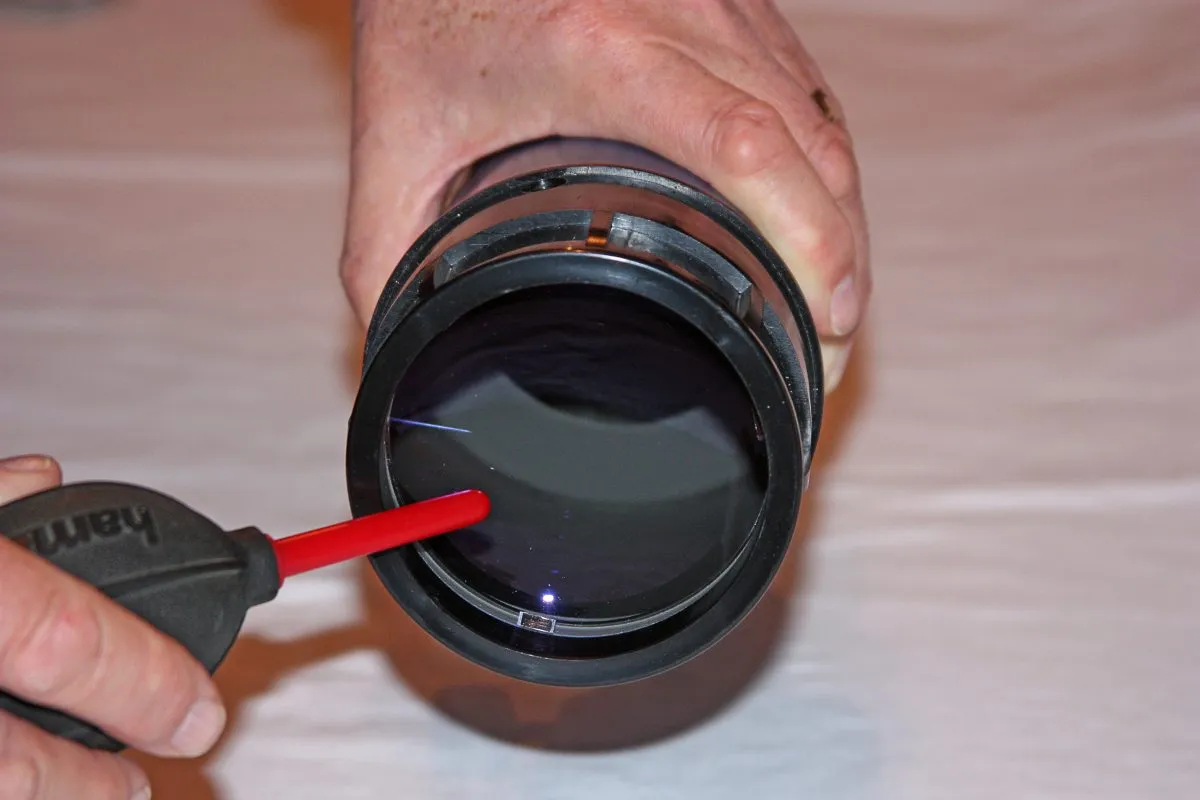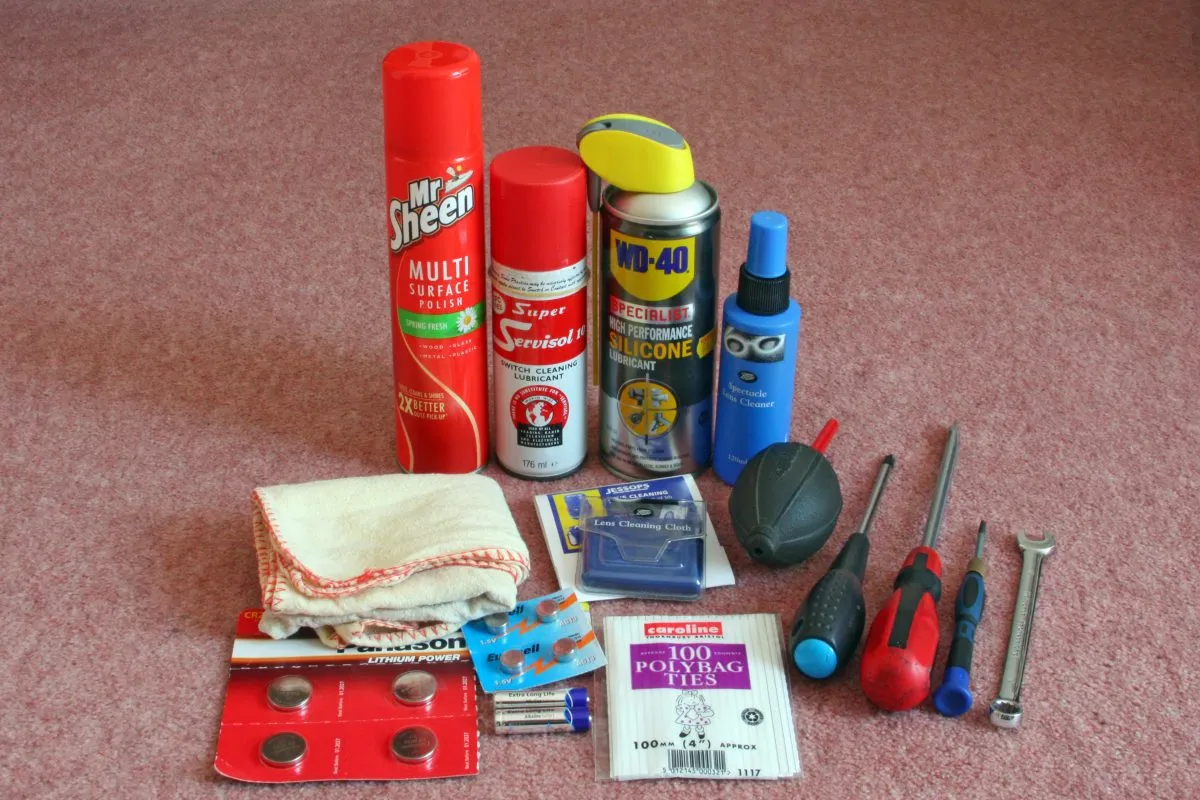Getting ready for the new astronomy season is a two-part process, as you must prepare both your equipment and yourself for the adventure ahead. Good astronomical observations start with a solid foundation, so begin by spanner checking the hinges on your tripod, tightening up and lubricating metal and plastic joints with silicone lubricant.
Check your mount to ensure both axes move smoothly with the clutches disengaged and, if the mount is powered, carry out a dummy run to make sure there are no unusual noises emanating from the motor drive.

Check dovetail clamp bolts move smoothly and lubricate if necessary. If it's a Go-To mount, visit the manufacturer’s website and update the software if needed.
Examine your telescope’s optical surfaces and use a bulb blower to remove dust particles.Telescope optics rarely require more than this, but any fungal growth and other biological detritus would indicate a deeper clean is required.
Clean the outside of the tube with a mild multi-purpose polish sprayed onto a lint-free cloth, not directly on to the telescope.
Get into good habits now, so that your telescope lasts all season. For more on this, read our guide on how to take care of your telescope.
Complete cleaning guides:
- How to clean your DSLR camera sensor
- How to clean binoculars
- How to clean your observatory
- How to clean a refractor
- How to clean a reflector

Binoculars
If you’re a binocular observer, check the optics in your binos and gently clean them if required. Normally it’s the eye lenses that pick up most dirt.
Check and clean your eyepieces if necessary as, like binoculars, these collect the most detritus.Remove dust with a bulb blower and use lens cleaning tissues, fluid and a microfibre cloth to restore them to pristine condition.
Telescope filters seem to be dust magnets and although they’re not critical for observing, the shadows cast by dust motes can be a real issue when imaging. Clean them in the same manner as your eyepieces.
Check the charging of your portable power tank because winter temperatures place maximum stress on battery packs.Use your dew heater, if you have one, as this will also enable you to test it at the same time.
This is also a good time to install new batteries in your red light torch and illuminated finderscope eyepiece or red dot finder.

Astrophotography
If you’re an astrophotographer, remove dust and grime from the outside of your camera by spraying mild multi-purpose polish onto a lint-free cloth – not directly on to the camera – and wiping it clean.
Clean the USB and power supply contacts using switch cleaner and cycle the contacts by inserting and removing the plugs several times.
Check the cleanliness of the sensor chamber glass and remove dust with a bulb blower, but only clean it further if absolutely necessary.
Use a blast of air from a bulb blower to remove dust from the inside of your filter wheel and from the filters themselves.
Before the observing season has begun is the best time to make a custom loom for fast installation and good cable management.All it takes is a few kitchen ties to hold the loom together while allowing some movement of the individual cables within it.
Check you've the latest versions of software and perform some simulated imaging runs to ensure everything's working as expected.
Produce new library files to include a fresh set of bias calibration frames and various exposure length dark calibration frames, so you only have to consider flat calibration frames at the end of each imaging session.

Prepare for the new astronomy season
As well as your telescope and other astronomical equipment, you need to prepare yourself to get back into regular observing. Plan the first few stargazing sessions using charts or planetarium software (like Stellarium) to remind yourself which constellations are well positioned and draw up a rough plan for the coming weeks and months.
Have a look at our pick of the best autumn constellations for inspiration.Also make a note of any special celestial events that the new season may hold. Again, if you need a bit of inspiration, read our guide Autumn astronomy: the best targets for longer nights.
If you're a binocular observer, have a look at our 10 autumn binocular astronomy targets. Or you could do worse than learning from one of the greats and see if you can spot Patrick Moore's top 5 autumn galaxies.
Look back over your observing notes and images from last year to identify the objects you’d like to re-visit (such as binary and variable stars) to capture any changes or improve on your previous work. If you've never kept observing notes before, now's the time to start! Read our guide on how to keep an astronomy log book.
If you don’t have a permanent observatory, practise assembling and disassembling your imaging system a few times so that it becomes second nature and you can make the best of the time available. Or, if you have the time and resources, you could build your own home observatory.
Dig out the warm winter clothing that you put away in the spring to make sure you'll be comfortable during the long autumn and winter nights.
Preparation is key to achieving your goals and avoiding frustration during your observation sessions. Now, bring on those long, dark nights!
Equipment for cleaning telescopes

It pays to be prepared and to have the right tool for the job. Here are some of the things you'll need to help clean your telescope and get your astronomy observing equipment into shape.
- Spanners
- Flat and crosshead screwdrivers
- Jeweller’s screwdriver set
- Lens cleaning fluid, tissues and microfibre cloth
- Bulb blower with brush removed
- Switch cleaning spray
- Silicone lubricant
- Kitchen ties for making wiring loom
- Replacement batteries
- Soft lint-free cloth
- Multi-purpose polish
This article originally appeared in the September 2019 issue of BBC Sky at Night Magazine.
